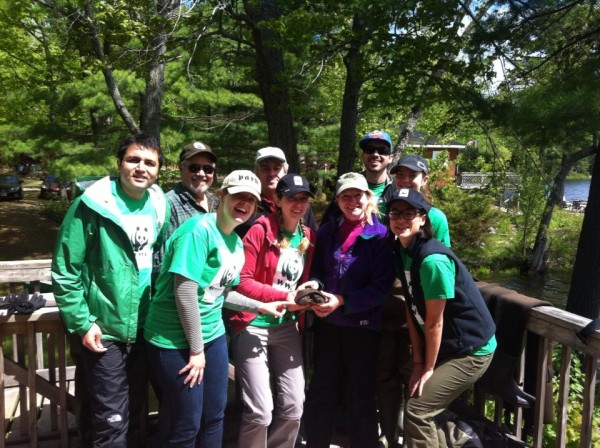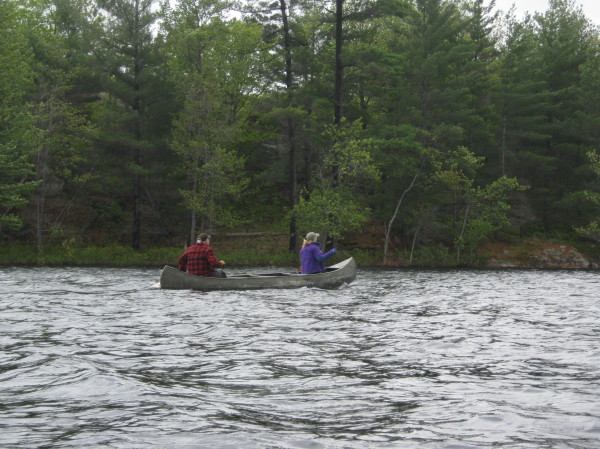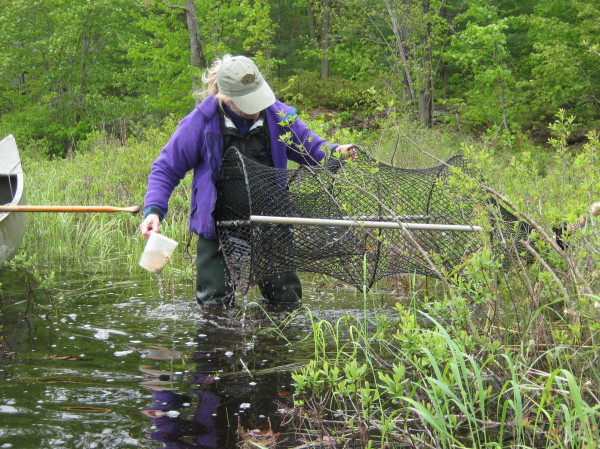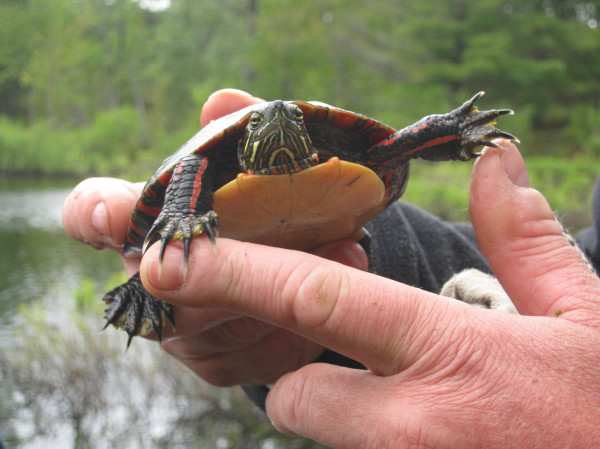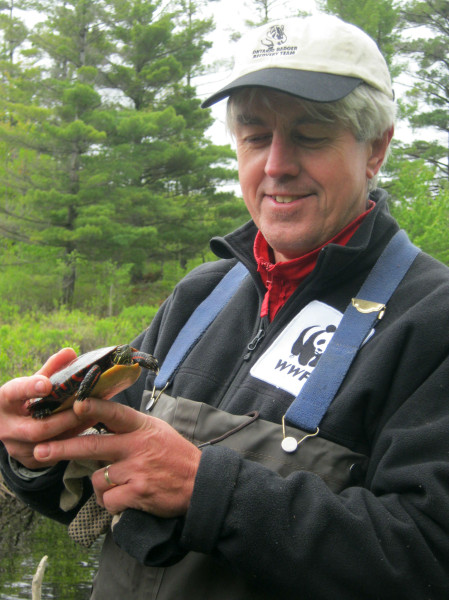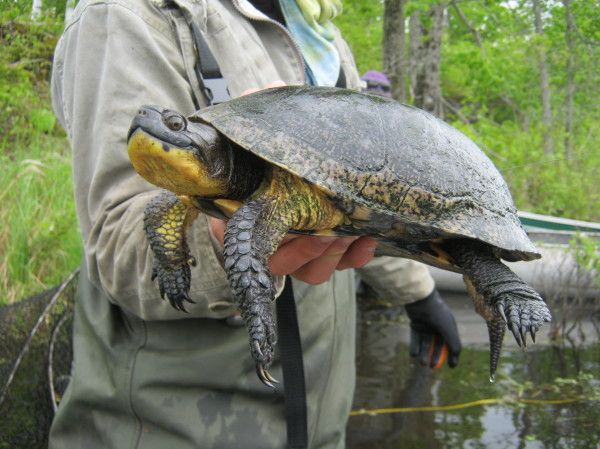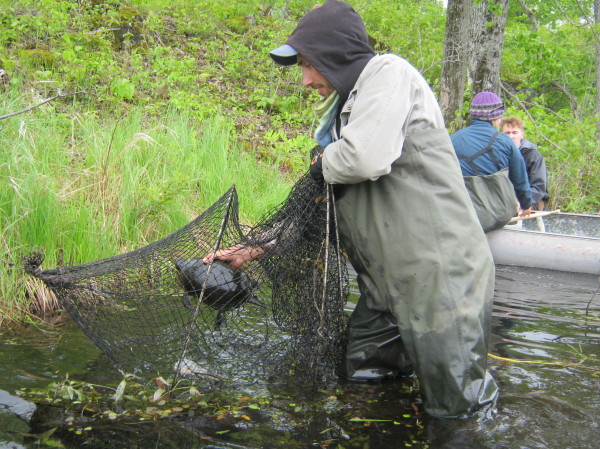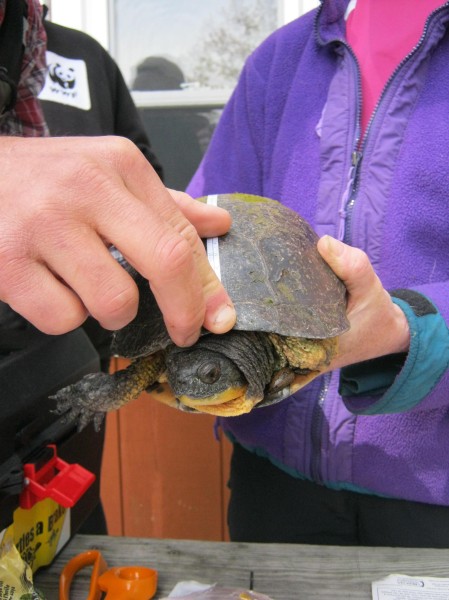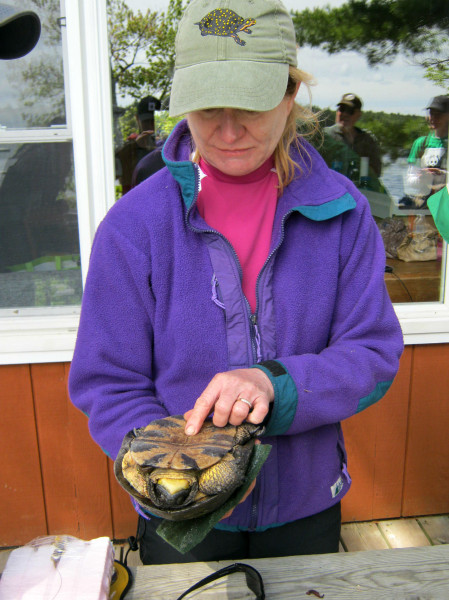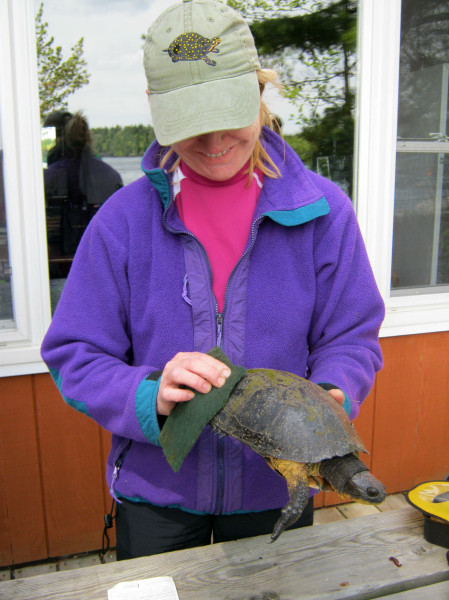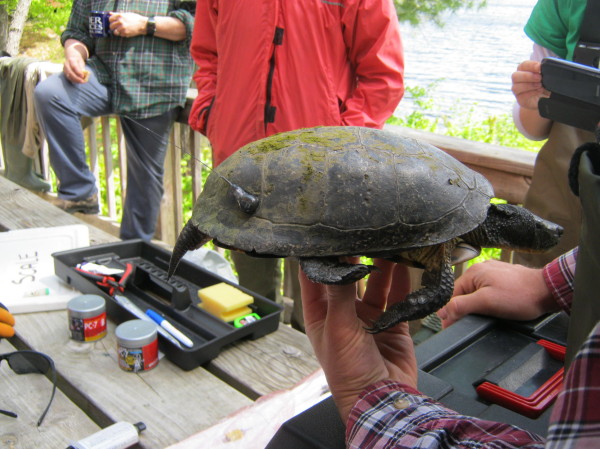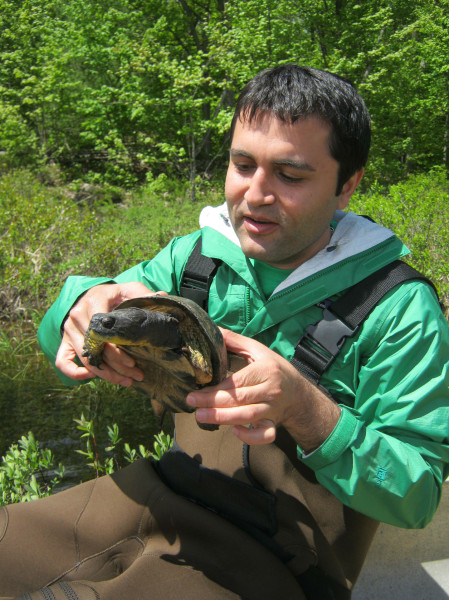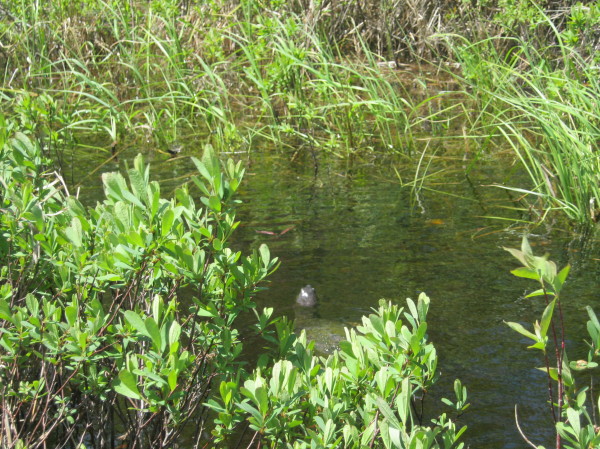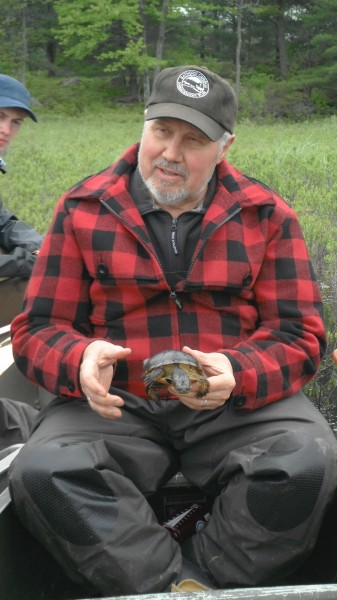Helping Blanding’s turtles on World Turtle Day
At the end of May, a few WWF conservation staff members had the pleasure of assisting Dr. Sue Carstairs, Executive Director and Medical Director of Kawartha Turtle Trauma Centre (KTTC), on a turtle field study in Ontario. The aim was to catch and tag Blanding’s turtles – a species that is Threatened here in Ontario, and Endangered in Nova Scotia – as part of an ongoing turtle research and recovery project.
When we arrived on location to help Dr. Sue, we were greeted with below seasonal temperatures, and even some unexpected snow, sleet, and hail! All of these signs indicated that it would not a great day to look for wild turtles, as turtles are less active in cooler temperatures and are unlikely to be spotted out of the water basking. Despite the cold temperatures, we decided to head out in the canoes anyway and check the traps that Sue’s team had already set before our arrival.
Sue and her team of researchers had arrived a few days in advance our crew, and the field work was already well under way. Her turtle team had already captured and tagged 7 Blanding’s turtles with radio transmitters before we arrived to help out. The radio transmitters are attached to the turtle shells, and allow the researchers to track the turtles’ movements in the wild and collect valuable data on behavior and life history.
Sue checks the first trap (below), and hopes that it will contain another Blanding’s turtle to form a part of the study. These traps are designed specifically for turtles, and are baited with sardines to attract turtles into the nets.
The first trap that we checked contained painted turtles. These were not the species that we were looking for specifically as part of the study, but we were happy to see that the nets were working well, and get the chance to learn about a turtle species up close and personally.
The painted turtle pictured above is a male – which you can determine by looking at his long claws in the photo. The males use their long claws to tickle the female painted turtles during courtship.
James Paterson of Ontario Nature showed us how to safely handle the turtles. James is a wealth of information when it comes to the natural history of reptiles and amphibians, so we all enjoyed learning from him and bombarding him with questions!
Luckily, the second trap that we checked had our target species inside – and James is seen here removing the turtle from the trap. This is an older male Blanding’s turtle.
After removing the Blanding’s turtle from the net, we brought it back to our cabin and collected valuable data on it, such as the measurements of the shell:
The turtle’s age, sex, and general health are recorded:
Sue cleans his shell in preparation for attachment of the radio transmitter:
And finally, Sue and James attach the radio transmitter to the turtle’s shell with epoxy glue:
After the epoxy glue was thoroughly dry, and we had collected all of the data we needed from the turtle, he was returned to the exact location in the wild where we found him.
Farid from WWF had the honour of releasing the turtle back to his home. We bid him farewell (but kept Faird with us!) and thanked him for his contribution to the study, knowing that Sue and her team would be able to track his every move for the next year while the radio transmitter is attached.
Later this year, the KTTC team will be releasing radio tagged juvenile Blanding’s turtles that were hatched and raised in captivity into the wild. The survival rates and behavior of these captive-raised turtles will then be compared with the wild ones that we caught during this study.
The KTTC is a registered charity that plays a vital role in the recovery of all of Ontario’s turtle species. As well as conducting important field studies like the one described in this blog post, KTTC operates a hospital for injured wild turtles, and releases them back into the wild when they have recovered. The centre has grown from admitting an average of 60 turtles a season, to admitting 647 turtles in 2012! These turtles come from all over the province. Unfortunately, turtles are often a victim of road mortality, and even a single turtle killed on the road can have big implications for turtle populations.
If you are interested in helping the Kawartha Turtle Trauma Centre, one simple act you can do is vote for KTTC in Shell’s Fuelling the change grant competition. The grant money that KTTC would be awarded would form a significant portion of their operating costs for a full year.
Thank you to Dr. Sue Carstairs and her team for teaching us about Blanding’s turtles and KTTC’s turtle recovery efforts in Ontario. All of us who helped out on the project now have a very soft spot in our hearts for the charming Blanding’s turtle.

